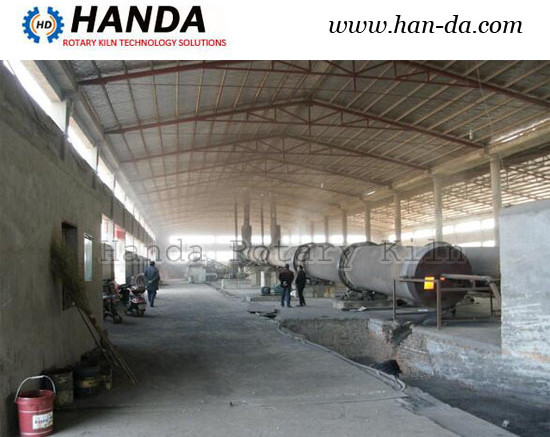By virtue of the excellent features like light body, heat preservation, waste recovery and ecological environment protection, lightweight aggregate has been attached great importance in modern industrial construction. With the development of economy and society, various engineer projects grow vigorously, and lightweight aggregate has been widely applied into bridge construction, super high-rise building, ocean platform construction and so forth.
Nowadays, most production equipments of lightweight aggregate use the industrial rotary kiln. As the industrial specialist of rotary kilns designing and manufacturing, HANDA(www.han-da.com) has launched a specially designed industrial rotary kiln that has become the key equipment for lightweight aggregate production line. As is well known, the raw materials of lightweight aggregate production contain shale, clay, coal ash, industrial waste residue, river mud and paper sludge, etc. In accordance with various materials and various production processes, each type of lightweight aggregate product has its own performance index.
In general, the production of lightweight aggregate is mainly influenced by the property of kiln feed, product type and calcination process of lightweight aggregate in the industrial rotary kiln. Within the industrial rotary kiln, the calcination process of lightweight aggregate is comprised of four phases, including drying, preheating, sintering and cooling. The columnar industrial rotary kiln body is always placed on the roller with about 3° angle. From the higher end of kiln, materials move to kiln tail under the action of rotational motion of kiln body. Meanwhile, high pressure blower makes coal dust sprayed into industrial rotary kiln from kiln head, and heat generated by sufficient burning could make materials occur physical and chemical changes and then produce expansion, after cooling, material becomes lightweight aggregate.
The revolving speed of industrial rotary kiln determines the required time that materials pass through the whole kiln. For those lightweight aggregate with lower water content, better expansion character and production apparent density materials, the rotating speed could be faster, sometimes even less than 45 minutes. While for those lightweight aggregate with higher moisture content materials, the rotate speed should not be too fast no matter drying or calcination.

